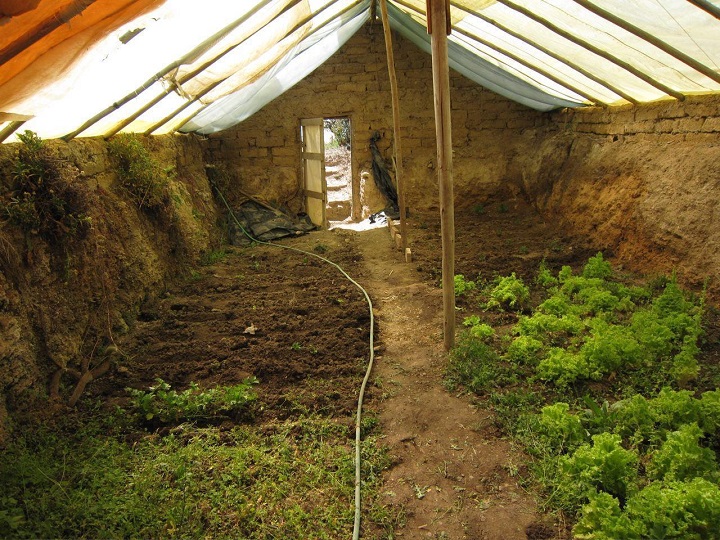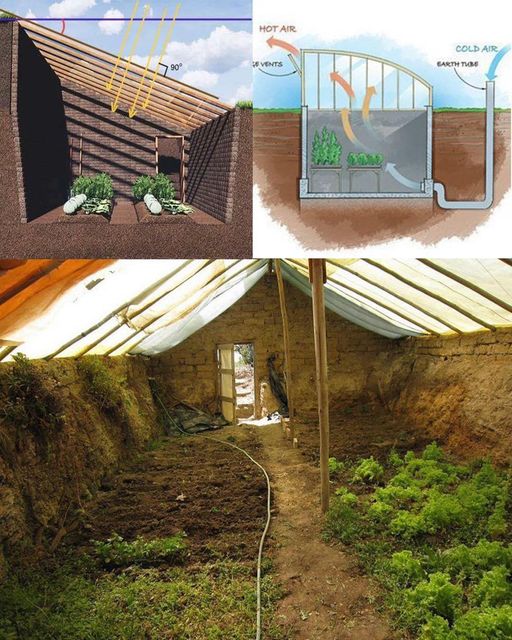Growing plants year-round, especially in cooler or fluctuating climates, can be a challenge. However, an underground greenhouse, also known as a ‘walipini’ or ‘pit greenhouse’, offers a sustainable solution. Leveraging the Earth’s natural insulation, these greenhouses maintain more consistent temperatures, protecting plants from harsh weather conditions and extending the growing season.

Advantages of an Underground Greenhouse
Building an underground greenhouse comes with a multitude of benefits. Since it’s partially or completely below ground, the greenhouse uses the Earth’s thermal mass to naturally maintain warmer temperatures during the winter and cooler temperatures during the summer. This reduces the need for additional heating or cooling, making it energy-efficient and cost-effective. Additionally, the underground structure provides protection against strong winds and heavy snowfall, ensuring the survival of plants in extreme weather conditions.
Choosing the Right Location
Selecting a suitable location for your underground greenhouse is crucial. Ideally, you want a spot with good drainage to prevent water from accumulating inside your greenhouse. A south-facing slope is optimal, as it maximizes sunlight exposure throughout the day. It’s also wise to avoid areas with large tree roots or rocky soil, as these can complicate the excavation process.
Building the Underground Greenhouse
Excavation: The first step is digging a pit to the desired depth and size of your greenhouse. The depth will depend on the local climate – deeper pits offer better temperature regulation in cooler regions.
Walls: Constructing the walls can be done using various materials, including concrete blocks, bricks, or timber. Make sure the walls are sturdy to support the roof and withstand soil pressure.
Roofing: The roof should be transparent or translucent to allow sunlight to enter. Materials such as polycarbonate panels or greenhouse plastic are ideal. The roof must be sloped to allow rainwater runoff.
Flooring: Choose a material that promotes good drainage, such as gravel or brick. This will help prevent water from stagnating and creating a damp environment.
Ventilation: Proper ventilation is essential to prevent overheating and maintain good air circulation. Installing vents or windows in the roof will allow hot air to escape and cooler air to enter.
Maintaining the Underground Greenhouse
Regular maintenance of your underground greenhouse is necessary to ensure a healthy growing environment. Monitor the temperature and humidity levels closely to create optimal conditions for your plants. Adjust ventilation as needed and inspect the structure frequently for any signs of wear or damage. Keeping the greenhouse clean and well-organized will also help prevent pests and diseases.
Additional Tips
Consider adding thermal mass within the greenhouse, such as water barrels or stones, which can absorb heat during the day and release it at night. This extra thermal mass helps stabilize temperatures further. You might also want to incorporate a composting system to produce natural fertilizer and additional heat.
Conclusion
An underground greenhouse can be a fantastic and sustainable way to grow plants year-round. Though it requires initial effort and investment, the rewards of fresh, home-grown produce even during colder months make it well worth the endeavor. Remember to regularly maintain and inspect your greenhouse to ensure the best growing conditions for your plants. Inspired by this? Share the article with your friends!





